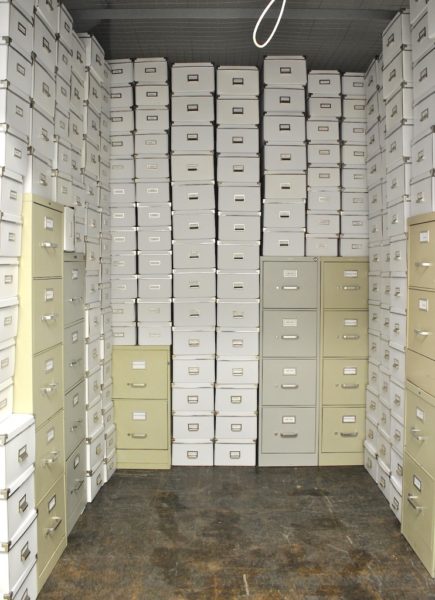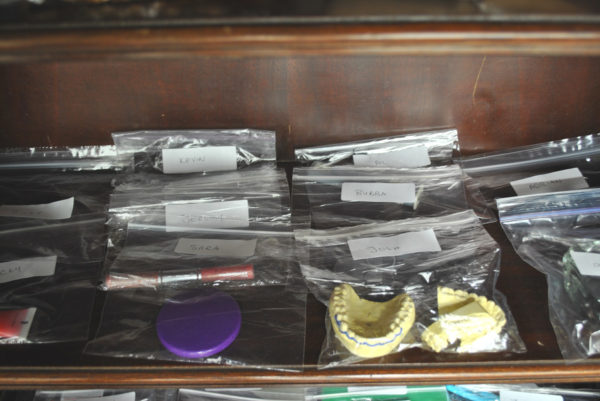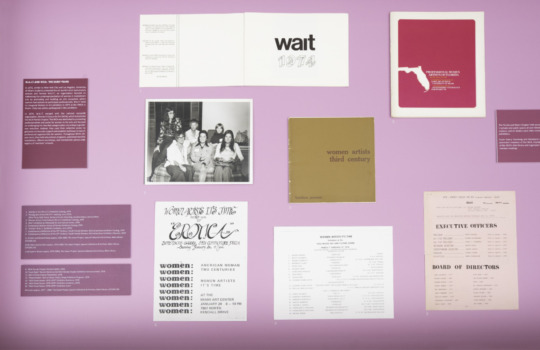February 8 was a busy day for art in Atlanta. It was a beautiful spring-like day, unseasonably warm, temperature in the 50s. Little did we know that in a few days we would be snowbound for the better part of the week. The day began with a talk titled “Creative Lives and Careers: On Professionalism” at the Atlanta Contemporary Art Center (ACAC), led by (now exiting) artistic director Stuart Horodner and communications manager Rachel Reese. However, many artists who could benefit from that information—given away for free*—were not in attendance. The topic and forum are hugely relevant in Atlanta, but if the target audience doesn’t show up, what’s the point? Professionalism might start with knowing the importance of attending events like this.
Next up was a studio visit with Paul Stephen Benjamin [watch for our upcoming interview with him]. Having first seen his work in the ACAC’s show “Coloring,“ I wanted to know more. The discussion was lively, intellectual, and informative—black identity, black culture, and just black. Benjamin is a consummate professional, and his ability to explain himself and his work made our studio visit the highlight of the day. Among his areas of interest is how we define and describe race and identity. For example, the transition from negro to Negro to colored to black to African American. Who decides this stuff? He’s a prime example of an artist working in Atlanta who deserves more attention and exposure.
It’s worth noting that the rest of the art we saw that day was not in a commercial gallery setting. With a dearth of viable spaces, many Atlanta artists and organizers have embraced the DIY pop-up model, but the jury is still out on just how sustainable that model is. It certainly doesn’t do much for creating an identity for the city’s art scene. But given all the empty commercial real estate in Atlanta, one has to wonder why there isn’t more pop-up activity here.
Our next stop was the swansong gallery exhibition of the Emory visual arts department, which will be eliminated this summer (that bears repeating: Emory is eliminating the visual arts from its academic offerings.) An enjoyable exhibition curated by Rebecca Dimling Cochran, “Cross-Reference” features works by Emory faculty and select alumni. The show closes on April 5, and Atlanta will lose another quality venue for the study and creation of visual art.
Participating artists in “Cross-Reference” include Linda Armstrong, Bill Brown, Joy Drury Cox, Ruth Dusseault, Sarah Emerson, Angus Galloway, Dana Haugaard, Diane Kempler, Julia Kjelgaard, Katherine Mitchell, Kerry Moore and Laura Noel. For me, Emerson’s colorful and playful canvases are the most memorable. There is a delicate, deliberate intensity that stays with you. And, in this case, the skulls that discreetly appear here and there seem appropriately funereal.
The late afternoon took us to Sarah Hobbs’s entrepreneurial new project “Repository” (closed February 22), a site-specific installation in four storage spaces at 14th Street Self Storage on the northwest corner of the Connector and 14th Street. In a video on Hobbs’s Facebook page she describes her fascination with the things that people eliminate from their domestic spaces yet can’t part with entirely, which she sees as a peek into people’s psyches. The four units are an exploration into the “ psychological burdens” that people might keep in their storage spaces. It was the best show of the day.

One room contained stacks of boxes categorized with such labels as “Lies I told,” “Car Wreck,” and “Emergency Room,” a testament to our need for preservation and memories. Another contained neatly arranged “stolen” things from friends and acquaintances individually stored in labeled Ziploc bags. The next room was lined with hundreds of shingles of cut cardboard on which she wrote some of her dark secrets: “I lie to my therapist all the time” and “I snoop around in my friends houses.” This provocative “confessional” for the revelation of things one might secretly indulge in elicits the appropriate emotional response—psychological titillation.
My editor** is making me address the fourth room, a completely dark chamber with a futon on the ground. As late as my second draft, I had overlooked the fourth room. On purpose. It was the weakest of the four. But she tells me it looks like an oversight to leave it out. Done.
Our final stop was the opening of “COSMS,” the first offering from Dashboard Co-op’s 2014 group of artists. Dashboard is a nonprofit curatorial enterprise that mounts exhibitions in vacant office spaces. Co-founder and executive director Beth Malone says that the 12 artists here were selected from over 120 submissions. This year’s focus is on immersive and large-scale efforts.

On view through March 8, “COSMS” is installed on the mezzanine level of Midtown Plaza. The midtown vibe is a departure from their previous downtown efforts. The more upscale venue combined with the caliber of installation pieces make “COSMS” their most polished effort to date. For the first time, they charged an admission fee and had an organized check-in process.
Jason Peters’s installation of stacks of concrete squares and pink neon lights grabs your attention as you enter the space. Dave Greber’s nearby installation—projections of himself as a rock star, his cat and dog as unwitting participants—delivers a mesmerizing experience. Twenty minutes later, I still had 10 artists’ works to take in.
Dashboard’s youthful energy makes for a great opening party experience, but whether they can they cultivate their venture into a mature arts organization remains to be seen. Malone indicated that they were looking to lease a space for a year, which would help in that regard. She also admitted that the organization has perhaps been coddled and favored for its underdog status. I think that Dashboard has realized that it’s time for the cool-kid crowd to grow up.
The larger question is whether we can cultivate the Atlanta art scene into something that matters on a national scale. Can we advance beyond our third-tier status as another regional outpost for regional artists? By now most of us know that there is not one single Georgia artist in the upcoming Whitney Biennial. Really, is no one in our state worthy? Shouldn’t our institutions and cultural leaders pave the way to destinations like the Whitney Biennial? If we don’t support our own, why should they?
People are producing and showing art; it’s the job of patrons, collectors, critics and aficionados to build an audience and keep our nonprofits and commercial galleries in business, most of which do this for love, because it’s certainly not for the money. Get out there and see some art. In fact, buy some art. Collect art. Collect what you like. It’s not hard, and in Atlanta it’s not even that expensive.






